Characteristics and description of the Brusnitsyn cherry variety
One of the most popular horticultural crops in Russia is cherry. When choosing a variety for growing on a personal plot, it is worth considering representatives of bush varieties. Noteworthy is the Brusnitsyn cherry variety, unpretentious in care, which is described in the article.
What is this grade
Brusnitsyna belongs to the bush type of crops. The variety has become widespread in regions with harsh climatic conditions. This characterizes the cherry as a plant with high winter hardiness. The care does not contain complex technologies; even an inexperienced gardener can handle it. The compact bushy tree provides a consistently generous harvest. Berries appear at a time when most berry crops complete fruiting.
Brief history of origin and distribution
Cherry Brusnitsyna is considered a popular variety in amateur gardens. However, the plant is not included in the State Register. Thanks to winter hardiness and unpretentious care, a sample of folk selection is successfully practiced by the inhabitants of the Urals and Siberia.
Recently, there has been a tendency to spread culture to other areas. Interest is shown not only by gardeners of harsh regions, but also by residents of the southern part of the country. Brusnitsyna also shows her best qualities when grown in areas with a mild climate.
Characteristics and description of the tree
The bushy tree has a spreading shape. During the season, skeletal branches throw out a large number of shoots 30-35 cm long. Bright green foliage densely covers the plant. The shape of the leaf is elongated, the edges are serrate, the apex is pointed. The height of an adult cherry reaches 2 meters.
The greatest aesthetic pleasure can be observed during the flowering period of the culture. At the end of spring, snow-white inflorescences appear. Almost all greens are covered with beautiful flowers. As the berries ripen, the branches are overloaded with a generous harvest.
Temperature resistant
The variety is ideal for regions with harsh climates. This is confirmed by the reviews of gardeners from the Arkhangelsk and Tyumen regions. Cherry blooms luxuriantly, bears excellent fruit in harsh conditions. The plant can withstand temperatures down to -40 ° C.
Young trees that have not reached the age of three should be covered with spruce branches or other insulation for the winter. An adult cherry is prepared for the cold season by covering the trunk circle with soil, dry leaves or peat.
Moisture and drought resistance
Shrub cherries are highly drought tolerant. This is due to the developed root system. The plant feels uncomfortable in wetlands or in areas with a high level of groundwater.
Reference! When grown in southern regions, it is recommended to choose shady areas. On overdried soil, the culture develops poorly.
Disease and pest resistance
Brusnitsyna has strong immunity. With prolonged rains or when grown in flooded areas, there is a tendency to lesions with monoliosis and coccomycosis. You can protect yourself from pests by carrying out preventive treatments.
One of the important activities is the collection of fallen leaves in the fall, pruning of damaged and diseased shoots. Plant residues must be disposed of by incineration. The soil in the area of the near-trunk circle is carefully loosened with an overturn of the upper layer (up to 7 cm).
Productivity and fruiting period
The variety belongs to late ripening crops. The cherry blossom period begins in the third decade of May. The peculiarity of Brusnitsyna is the long-term viability of pollen (2-3 weeks). On a bush tree, about 40% of the fruits are formed due to the self-fertility of the plant. It is possible to increase the yield by 19-12% by planting pollinators nearby with cherries. But even without them, it is possible to consistently receive generous harvests. The berries turn red and are filled with juice in August.
A young tree begins to bear fruit 3-4 years after planting. At the age of 6-7 years, 15-20 kg of ripe berries can be removed from one plant.
Characteristics and description of berries
Berries of the Brusnitsyna variety have a rounded shape. The size of the fruits is small (4-6 g), but they contain a lot of juice. Upon reaching ripeness, the skin color becomes intensely red. There are notes of freshness in the taste, there is a balance between acidity and sugar.
Areas of their application
Whatever the harvest, berries are always used. Juicy fruits are good fresh. Dessert dishes, sauces, drinks are prepared from them. If you approach the issue of winter preparations with imagination, you can stock up on jams, preserves, confiture and other twists.
Reference! The easiest way to replenish stocks for the cold season is to freeze or dry cherries.
Advantages and disadvantages of the variety
Like no other, residents of regions with a harsh climate appreciated all the advantages of the Brusnitsyna variety. Among the main advantages of bush cherry:
- consistently high yield;
- self-fertility, no need to worry about planting pollinators, looking for a place for them in a small garden;
- interesting fruit taste, where sweet and sour notes are intertwined;
- compact size of the plant;
- high winter hardiness;
- strong immunity;
- the ability to endure dry weather for a long time;
- unpretentiousness to agricultural technology;
- short adaptation period;
- high decorative qualities.
Taking into account the reviews of experienced gardeners, the Brusnitsyna variety has no drawbacks. Some gourmets point to the predominance of acid in the taste, but this is inherent in the vast majority of varieties of cherries.
Growing technology
The Brusnitsyn cherry cultivation technology does not have any peculiarities. The general rules for growing popular varieties of stone fruit trees are taken as a basis. Primary requirements:
- timely watering;
- preventive treatments;
- introduction of dressings;
- pruning;
- preparation for the winter period.
Optimal conditions
For a seedling, you need to choose the right place. It should not be in lowlands or swampy areas. Drafts are dangerous for a young tree, so it is better to bypass blown zones.
The variety develops well and bears fruit on mixed soils (fertile soil with sand). If, when digging a hole for a seedling, a high density is found, the soil is lightened with sand and clay.
Other important conditions include:
- low groundwater level;
- moderate air humidity;
- diffused light.
Landing dates and rules
For planting cherries, you should choose areas on a hill located on the southwestern side of the garden. They must be reliably protected from the winds. Saplings will be warmer in a harsh winter if they are identified not far from wooden buildings.
The best time to plant is in spring. Taking into account the climatic features of the northern regions, work can be planned for 2-3 ten days of April. During the summer time, the tree will have time to form a strong root system, gain strength before the first wintering. If you plant it in the fall, then the chances of survival in severe frosts are negligible.
The yield and health of cherries are influenced by nearby crops. The following plants have a beneficial effect on the growing season:
- hawthorn;
- sweet cherry;
- honeysuckle;
- currant.
It is undesirable to plant tall apple trees, apricots, lindens, conifers in the immediate vicinity of cherries. And the neighborhood with raspberries, gooseberries and other representatives of nightshades should be abandoned altogether. They are sources of common fungal infections.
A seedling also needs preparation. It is wrapped with a well-damp cloth 10 hours before planting to soften the roots. Re-moisten the fabric as needed to prevent it from drying out.
The sequence of planting operations.
- In the selected area, dig a hole up to 60 cm deep with sides from 60 to 80 cm. The soil from the hole must be laid out separately on the side, so that later it can be mixed with fertilizers and sand if the soil is compacted.
- Check the roots of the seedling. If necessary, cut off rotten and damaged fragments.
- Place a strong material peg in the center of the groove.
- Introduce a mixture of soil and fertilizer into the center of the pit. Pour it out so that a slide forms. The following fertilizers are used: potassium, phosphorus, wood ash, humus.
- Pour 2 buckets of water into the pit, let it soak.
- On the hill formed in the fossa, carefully lay out the root processes. The root collar should be flush with the ground.
- Introduce the earth in stages, slapping it over the embankment with your hands.
- Step back about 30 cm from the trunk and form a hole that defines the near-trunk circle. It is needed to drain fluid to the roots.
- Tie the seedling to the support.
Reference! Experienced gardeners recommend not watering the near-stem circle after planting. The next moistening of the tree is best done after 3-4 days. After irrigation, you need to lay a layer of peat mulch.
Do not drive in a metal rod or a wooden stick that acts as a support after planting a seedling. This can damage the root system. Compliance with the sequence eliminates the risk of damage to the roots and the plant as a whole.
Further care
After planting, the tree is regularly watered. In the first month, irrigation is carried out 1-2 times a week. In hot weather, you need to moisturize more often (2-3 times a week). The norm of water is from 20 to 40 liters. However, the degree of soil moisture should be controlled. Excessive moisture will provoke root rot.
Periodically, the soil in the near-trunk soil must be loosened in order to enrich the roots with oxygen. At the same time, weeding is carried out. They are removed to prevent decay of the root collar.
Throughout the warm season, the tree is sprayed from pests and diseases with special fungicides or insecticides. Also used are funds prepared according to folk recipes.
The cherries are pruned annually. It is advisable to do this in spring and autumn. At the beginning of the season, frozen or damaged shoots are removed. In the fall, unnecessary and diseased branches are cut from the tree, the bush is formed.
During the season, you need to make top dressing 2-3 times. The first falls in the spring before bud break. For this period, it is appropriate to use a nitrogen composition. During flowering, fertilize with a potassium-phosphorus mixture. In the fall, in the process of preparing the plant for winter, it is recommended to use multicomponent mineral products.
Possible problems, diseases, pests
With proper care, Brusnitsyn cherry is not a hassle. If you ignore pruning or fertilization, the plant can get sick. Among the main reasons provoking the development of the pathological process:
- prolonged rains;
- warm and humid weather;
- plant residues in the form of leaves and twigs that remained under the tree.
The Brusnitsyna variety has strong immunity, but in the presence of predisposing factors, the plant can get sick:
- coccomycosis (fungal infection is recognized by brown spots that merge into one large spot on the leaves);
- monoliosis (fungal disease affects the fruits, which makes them brown).
The condition of cherries can also worsen due to harmful insects.Among the main pests:
- cherry fly;
- aphid;
- cherry weevil;
- sawfly.
To eliminate problems, it is recommended to use folk recipes and special preparations for parasites. The following tools are popular: Aktara, Horus, Engio, Aktellik, Switch.
Wintering
The seedling spends its first winter under a reliable shelter and high hilling. In this case, groundwater plays an important role. With a close occurrence at the roots, freezing of the root system is possible. Before planting, you need to take into account that the minimum indicator from the soil surface to the water level should be 2.5 m. You also need to arrange grooves around the tree to drain precipitation.
Reference! It is recommended to use agrofibre, spruce branches, wood shavings as insulation. The trunk circle is covered with a thick layer of peat.
Reproduction
A common method of propagation of cherries is vegetative, which is carried out using clonal rootstocks. This option provides a quick entry of the culture into fruiting, the preservation of most of the varietal qualities. The disadvantage is the lack of certain knowledge of skills for growing root shoots.
Another method of propagation is called grafting. Lignified and not lignified shoots are used in the work. The seedling retains its varietal characteristics.
Rooting of non-lignified and semi-lignified cuttings is carried out from about the third decade of July. The container is filled with a substrate, which includes:
- fertile soil;
- peat;
- perlite or coarse sand.
A 10 cm layer of expanded clay is poured onto the bottom to create drainage. After the introduction of the filler, the soil mixture is well moistened and allowed to settle. In the early morning, shoots are cut from cherries and blanks are cut into 15-20 cm in a cool room. The lower part, which will take root, should have a slanting cut. It is dipped in Kornevin and placed in a container with a substrate at an angle of 45 °.
A box of cuttings is kept at 100% humidity for a couple of weeks. Then, over the course of 1 month, the level is gradually reduced to the usual indicators typical for the climate of the region. In the spring, the rooted cuttings are transferred to open ground.
When using the seed propagation method, varietal qualities are not preserved. This method is used primarily by breeders to grow a new variety.
Features of growing this variety, depending on the region
Cherry Brusnitsyna grows well both in the northern regions of the country and in the south. However, there are nuances in growing for each case.
In warm areas, the crop should be planted in light shade. Prolonged exposure to the scorching sunlight is fraught with burns and drying out of the plant. The size of the fruit decreases, and the yield also decreases. Abundant watering and the creation of partial shade will help to save the culture. To do this, a tall cherry tree or another kind of cherry is planted near the bush cherry. When preparing for the winter, it is not necessary to cover the plant with spruce branches or agrofibre. It is enough to add peat to the trunk circle.
When grown in regions with harsh climates, creating a shelter is a must. It is also important to fix the stem to the support to protect it from the winds.
Reference! When choosing a place for a seedling, preference is given to an area located as close as possible to a high fence or building.
Pollinating varieties
A feature of the Brusnitsyna variety is the self-fertility of the plant. A good harvest can be obtained without planting nearby pollinators. The pollen in the inflorescence remains and germinates up to 2 weeks. Sometimes the period lasts up to 3 weeks. Due to this, more than 40% of berries are formed from all flowers.
How is pollinated
Still, experienced gardeners recommend planting pollinators nearby. They can be different varieties of cherries and cherries. The most popular is cherry variety Lighthouse. Pollination is carried out by insects. This leads to an increase in yield by at least 10%.
Reviews of summer residents
- Mikhail Ivanovich, Ural region
I bought the Brusnitsyna cherry on the market by accident. Only at home I considered that the roots are not strong enough. In the spring I planted a seedling, and a year later the first fruits appeared. The yield increased every year. At the age of a tree of 6 years, he took 15 kg of fruits. The plant is unpretentious in care. I do not use chemicals for insect control, I get by with wood ash, infusion of garlic and wormwood.
- Elena Vyacheslavovna, Ishim, Tyumen region
Our soils are dense, so we had to tinker with Brusnitsyn cherries. After planting, the seedling sat in the ground for a long time without development. I noticed a slight increase in the second year after disembarkation. Fruiting began after 4 years. There were enough berries, and to eat fresh, and for jam. For the winter I wrap the tree with spruce branches, I insulate the trunk circle with peat. The plant tolerates winter surprisingly well.
The most delicious varieties of cherries:



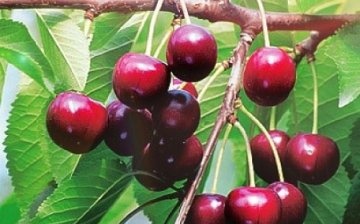
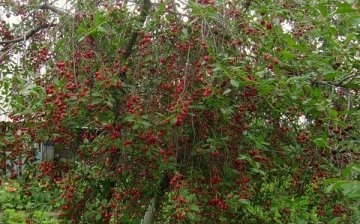
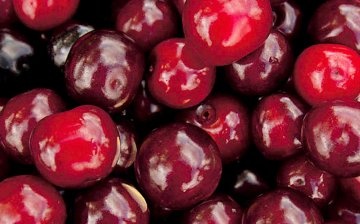



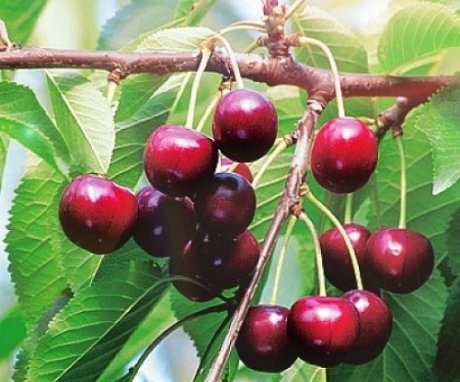
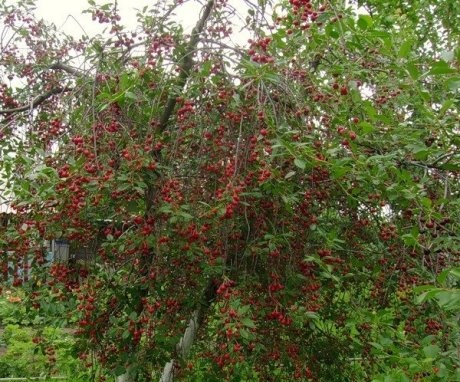
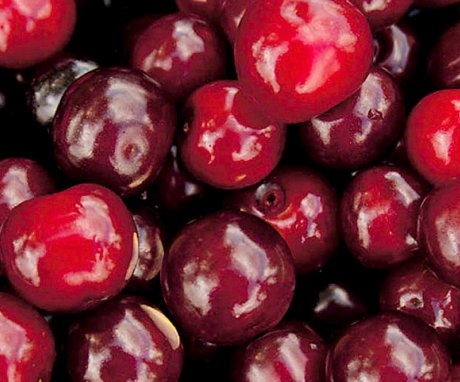
It is strange that cherries on a dwarf rootstock have high frost resistance. As a rule, vigorous and medium-sized fruit trees are more resistant to winter conditions. True, dwarf trees begin to bear fruit earlier and this is their main plus.